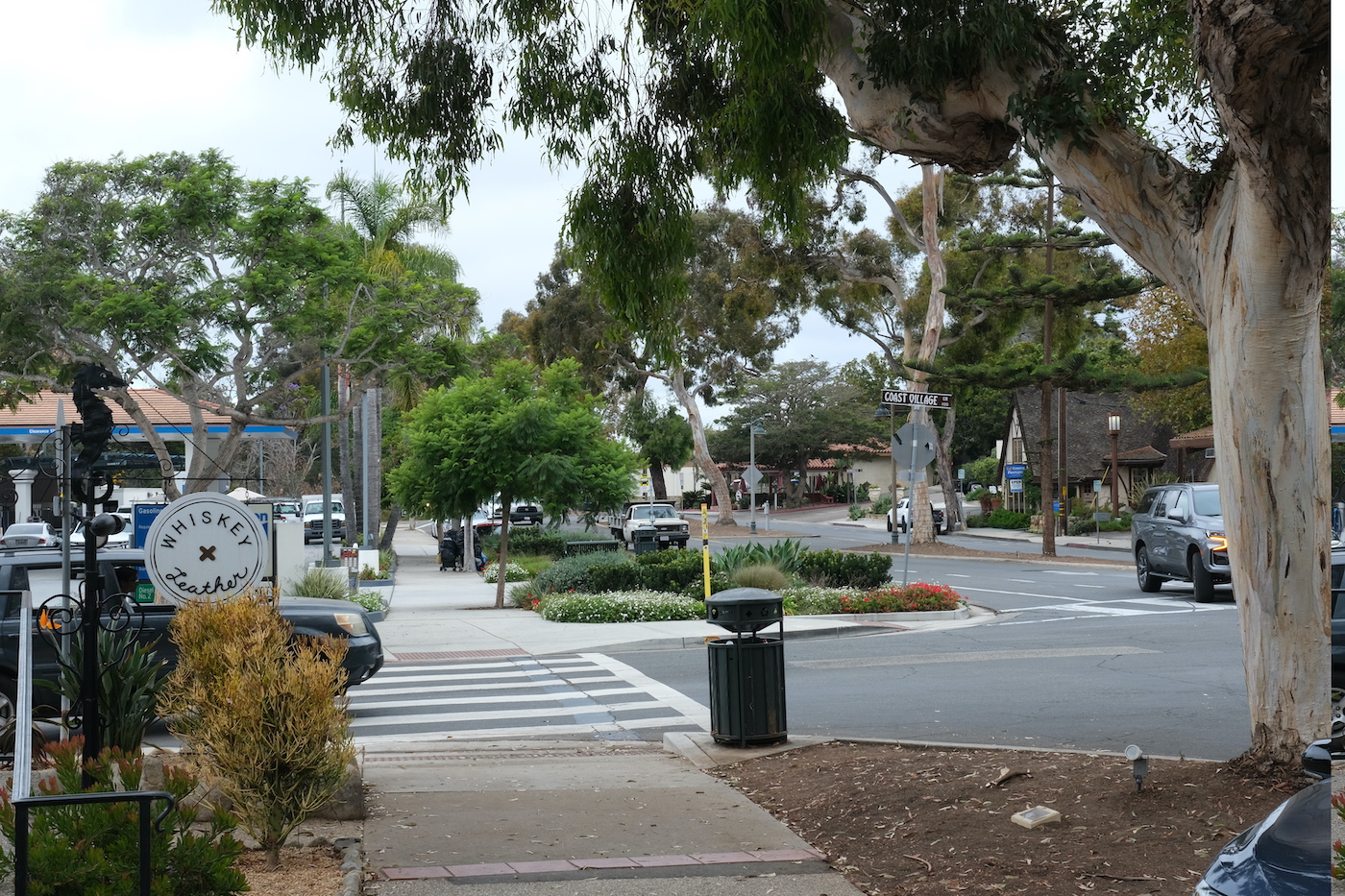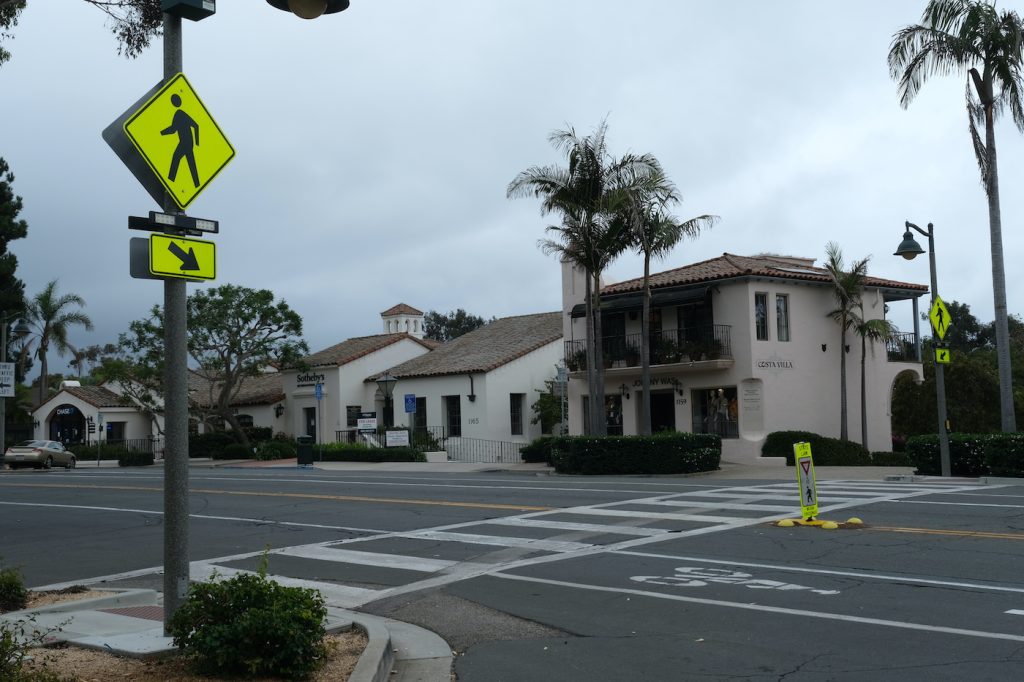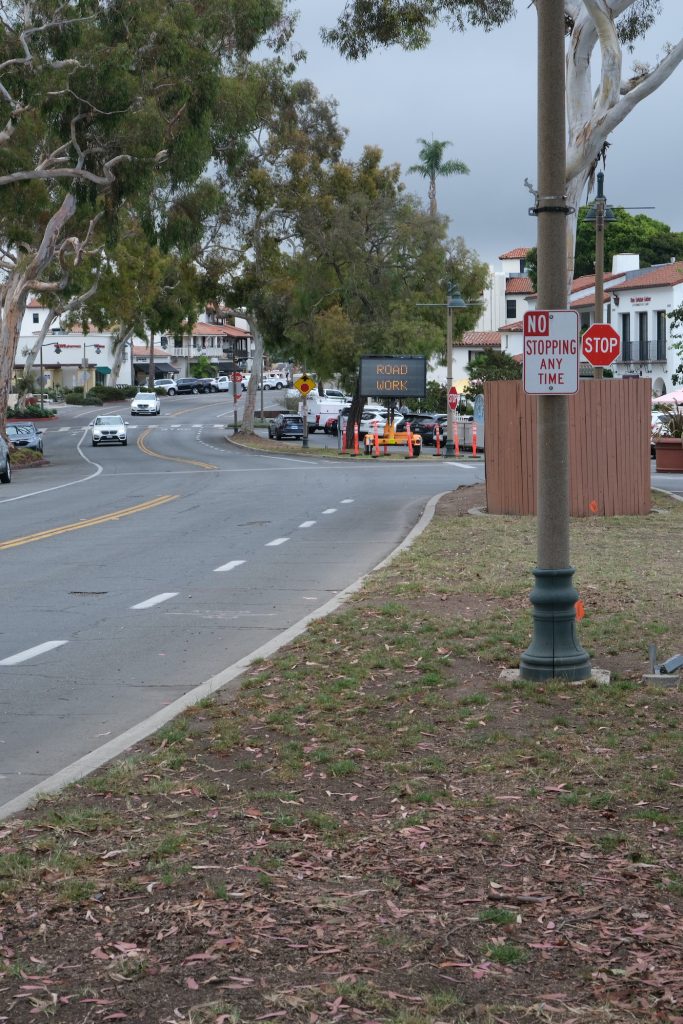The CBID and I: Local Businesses Talk Expectations, Issues, and Unity along CVR

The businesses that run up and down Coast Village Road (CVR) make up a neighborhood brimming with pride. There are old, fabled institutions like Lucky’s, generational property owners à la Jeff Harding, and small business owners who took leaps of faith and ended up with dreamy storefronts such as the folks atWhiskey & Leather. The journeys and inspirations that have created the refined patchwork of businesses along this Montecito strip are diverse, but they share a unique oneness. Any number of owners could give you a precise and energetic account of how they nabbed the perfect location, or, for the older shops, how they have absorbed years of love from a community of smiling, sun-kissed faces. This is their home. They are like residential homeowners with natural proximity disputes. Yet, instead of trees growing over fences with leaves in the pool, CVR has parklets growing into the street with fries falling on limited parking spaces.
The last few years have been difficult. Natural disasters and the COVID-19 Pandemic have affected every business owner’s experience on Coast Village Road. But, above this pain, unity through community has prevailed. Even small acts like purchasing gift cards or getting takeout helped this area persevere. When being “out-and-about” became feasible, unity even included restaurant parklets that became important add-ons to the whole neighborhood: Come to Coast Village Road to eat, stay, and safely support local retail.
As the world becomes increasingly post-pandemic, our vision of unity changes, but not in a bad way. Rather than being a means to survival, unity can now mean collective betterment. It can mean that rather than securing buoys to keep the ship afloat, we can plant and maintain lush medians. Montecito is already a “world-class destination,” drawing visitors from around the globe, but improvements along CVR could help it live up to the feeling associated with its name and reputation; this was a sentiment directly expressed by Jeff Harding as he spoke on the Community Benefit Improvement District (CBID).
The CBID is an investment in the neighborhood, a collective leap that understands that togetherness continues on. An observation by Mindy Horwitz ofSimpatico Pilates highlights how individual and community goals meet at a crossroads on CVR: “I’ve always been impressed with how well most of the shops take care of their personal space. It’s just the center divider and public spaces that could use help.” Business owners and employees take care of their shops to draw customers in, taking personal pride. But this is also a form of community pride, showing commitment to aesthetics of the whole street.
The parameters that created the CBID supply important context. The district is divided into two benefit zones, which derived costs from a mixture of size and location. The separation into two zones is recognition that not all businesses will reap benefits equally, but it is different from the impossibility of all owners getting exactly their “money’s worth.”
The initial CBID budget is nearly $300,000. Though median improvement became a neighborhood rallying point, the CBID highlights many other changes such as general beautification, increased sidewalk cleanings, safety/security, marketing, parking woes, and even event planning/decorations. Understandably, each business also has individuals hopes, desires, complaints, and visions.
If all goes smoothly, the CBID will continue to bring in more money to complete projects for years, but this only occurs if most “stakeholders” recognize satisfactory results. Talking to these “stakeholders” sheds light on some greater expectations.
Beautification
Unanimously, beautification is seen as a worthwhile investment with a large payoff. Leonard Schwartz of Lucky’s Steakhouse referenced many iconic SoCal hotspots, highlighting their ability to maintain greenery as vital to their draw. He pointed out that landscaping “as you go to Santa Monica, Brentwood, and Los Angeles is impressive in large, beautiful medians.” Given the draw and wealth of Montecito, he feels CVR could do better. Schwartz compared Montecito to Andy Griffith’s Mayberry, referencing the small, community feel… He also argued Montecito could compete with the likes of Santa Monica. CBID funds could allow these seemingly conflicting ideas to coexist.
Above all, Kevin Frank of K. Frank prioritizes improving his community’s natural beauty. He can envision a good combination of water saving, native plant life with floral greeneries speckled in; “I think my goal is for it to look lush, attractive and mature, and that can be done in both ways.” Kevin believes that median improvement is compounding – as things look nicer, more can be posted on social media and events will be more enticing – thus it would effectively kickstart the CBID.
No business owner or speaker disapproved of improving the medians and increased vegetation, though some highlighted it more than others. Restaurants, retailers, and professional groups alike agreed. They also heavily agree that taking care of these new elements and making sure they remain beautiful is just as important as their implementation. For businesspeople with long histories on CVR this was especially true. Past changes have lacked an edge of permanence. On that note, businesses are also quite open to drought-friendly, native plant life; native plant life makes median improvement forward thinking, but some qualified their use: Drought-friendly is beautiful “when done right.”
Why is Beautification So Easy to Talk About?
CBID goals can be divided into two categories: local neighborhood issues and world-class destination issues. As Schwartz astutely discussed, Montecito can uniquely be both Mayberry and Santa Monica, and the two worlds inevitably cross in the CBID. Work for the median, new plant life, and street cleanings make the neighborhood visually appealing – this propels CVR toward world-class status and has wide support.
Most investments that will make Montecito into a world-class destination have broad support. Meanwhile, the issues that involve the Mayberry side of Montecito become divisive because changes literally hit close to home.
Safety
Safety is one of those Mayberry issues. Each businessperson becomes a homeowner that sees different holes in the fabric of comfortable living on Coast Village Road. Concerns of safety range from general security to traffic intricacies.
Ariel Hujar of Whiskey & Leather included both the size of her store and staff while explaining how increased security could help businesses on the street. The main issue is one of discomfort as the houseless population and stores exist in proximity. She believes even a slight increase in security presence could diffuse and lessen the frequency of such encounters.

In line with Hujar’s desire for a slightly increased patrolling presence, Marlene Vitanza of Peregrine Galleries feels that an increased number of police cars/security personage whisking “up and down the streets would be an immensely helpful thing. If people felt this street was well patrolled at night, one’s worries would be lessened.”
Retailers highlighted vagrancy and security presence due to the nature of owning a storefront and because they generally have small staff.
Some safety concerns refocused on medians and plant life. Horwitzof Simpatico Pilates was particularly concerned about the state of some of CVR’s larger trees, “there are some trees that are dangerous, that look like they could fall at any time.” There has been work on them, but more attention could be paid to the issue. “They are Torrey pines, and they have a lifespan; if they were to come down it would be very dangerous.”
Others – mainly, but not solely referring to restaurant owners – discussed the complexity and convoluted traffic issues on the road. Four-way stops are often overlooked, and extra clarifying signage could be a huge benefit to the cyclists and pedestrians that make Coast Village so lively. Restaurant owners’ safety concerns revolved around this complex relationship between pedestrians, cyclists, and cars likely because “busy times” at restaurants are part of larger traffic rushes (e.g., lunch, post-work).
Members of each of these groups naturally expressed concern for other safety measures, but these were the most common items discussed.
Pedestrians, Parking, and Transportation
Though visitors are also drivers and pedestrians, the influx of these people brings energy, traffic, and wear to a settled community; these are neighborhood issues.

Pedestrians were universally advocated for by all the neighbors of Coast Village Road, no matter one’s location along the strip. Increased frequency and thoroughness of sidewalk cleanings only serves to make everyone’s experience better. Making the crosswalks safer will prevent accidents and encourage people to get out and enjoy their local scene.
One business owner with whom I spoke thoroughly about pedestrians and alternative modes of transportation was Rachel Greenspan ofBettina. Bettina is still part of Zone 1 of the CBID; however, they are removed from the main strip. This location comes with its benefits and flaws: parking is far easier to navigate, and outdoor seating is plentiful, however the CBID may have less of an impact. All of this brought most of Rachel’s comments toward improvements for pedestrians. She said she would love to see CVR become a “destination where people walk from one end to the other.” The current sidewalks are a little worn and unappealing, making the little things inconvenient, and “walking a stroller down the sidewalk can be rough.” Going beyond pedestrians, Rachel and I also enthusiastically discussed different bikeshare systems that would make accessing the lower portions of the street easier and could even help improve parking woes.
However, good points were made by Leonard Schwartz and Leslee Garafalo of Tre Lune questioning the safety of new bikeshare systems. Neither was against the concept, but in practice feel it would be unsafe to bring a new element into the already hectic CVR. Leonard expressed concern for the young children he already sees zooming around on electric bikes; noting they present a danger for themselves and motorists. Garafalo discussed the same worries for a street that already packs a lot into the space it occupies. Being a neighborhood that is also a heavy traffic destination can bring on these stresses.
Parking was an elephant in the room, but rightfully so. CVR is a small area, reliant on mutual coexistence. Marlene Vitanza of Peregrine puts it well as she asks, “Who wouldn’t be pro-restaurant? They bring in business and out-of-town business.” These customers are passed onto retailers. This point of view makes addressing parklets difficult.
Even as we move away from peaks of the pandemic, restaurant workers such as Schwartz mention “there is still an overwhelming demand for outdoor dining” and this may increase with new aesthetic changes that the CBID offers. Garafaloadds onto this by acknowledging that the restaurants are taking on increased revenue from parklets. However, she understands the solution cannot come from the CBID. New public parking to make up for parklets could be funded by restaurants’ increased earnings. Her suggestion adds a layer to the conversation… Beyond earnings, Tre Lune and other eateries are willing to pay to keep parklets for the sake of their patrons’ “happier, healthier, California experience.”
Unfortunately, extra lot space is hard to come by, making this solution difficult in practice. Jeff Harding mentioned that “20 percent of the parking spaces along Coast Village Road are taken up by parklets.” This number places a very real burden on retail locations. Horwitz of Simpatico Pilates explained a scenario that is sadly recurring: “One client who used to always come on a certain day will not come anymore on those days.” They were a Friday customer and the Farmers Market and parklets combine at that time to take up massive amounts of space.
It is important to mention that non-CBID changes are coming to the parklet situation on CVR. As of last week, allowable restaurant parklet area will be reduced come October 28.The CBID is an equal stakeholder concept, not exactly a platform to hash out the parklet conversation, and it is being progressively dealt with accordingly.
Social Media and Events
These areas will encapsulate the new Coast Village and broadcast it in enticing ways. Thus, it falls into the “world-class conversation.”
Hujarof Whiskey & Leather brought up the idea of designing physical pamphlets that could highlight or promote various businesses up and down the road. They could be free and available in hotels and tourist hotspots. “If they had a pamphlet there that they could give out, saying, ‘Here are some cool local places to go and explore,’ that could get more people moving” to the outer regions of the road. The same idea could be applied to social media posts.
Social media and promotion are intriguing because they are not confined by location. For businesses further down the road like Bettina, it could be a way that CBID money be mutually beneficial.
Nonetheless, it is difficult to emphasize these changes above long-term aesthetic improvements such as planting new vegetation, median repair, and pruning old trees. Kevin Frank sees the CBID as a long-term and stacking project. The Improvement District pays off best when beautification is the first concern. “I do think promotion with social media and a new website can drive a lot of people you know to the street and will benefit everyone. But I certainly first want to see the aesthetic improvements that build with the soul and in the end, they work in tandem.”
Whenever these sorts of benefits do begin to spill out of the CBID though, nearly all business owners of restaurants, retail, and professional alike believe that promotion can be a powerful tool. This is especially true because they believe in their little neighborhood; how could one not want to visit upon learning what CVR has to offer or seeing a well-decorated celebratory event?
Whether it is a Mayberry, or a Santa Monica, or – as could be argued – a little of both, Montecito is chock full of business owners who believe in their town. The CBID presents a chance that owners on CVR understand well because most are trusting and eager stakeholders. Disputes clearly arise, but these businesses seem to be settling them correctly. CBID funding is about improvements that are touching, wide, and mostly neutral. To be world class requires more than a look, it also needs soul – if it is done correctly, the CBID can nurture these attributes simultaneously.







You must be logged in to post a comment.